Setting Up Your Spider Farmer Grow Tent: Complete Guide
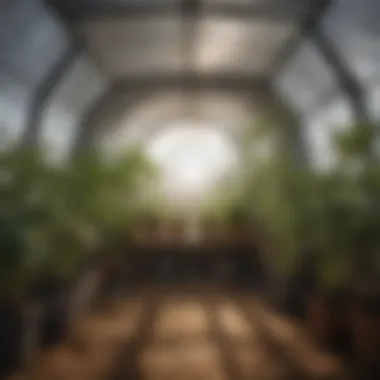
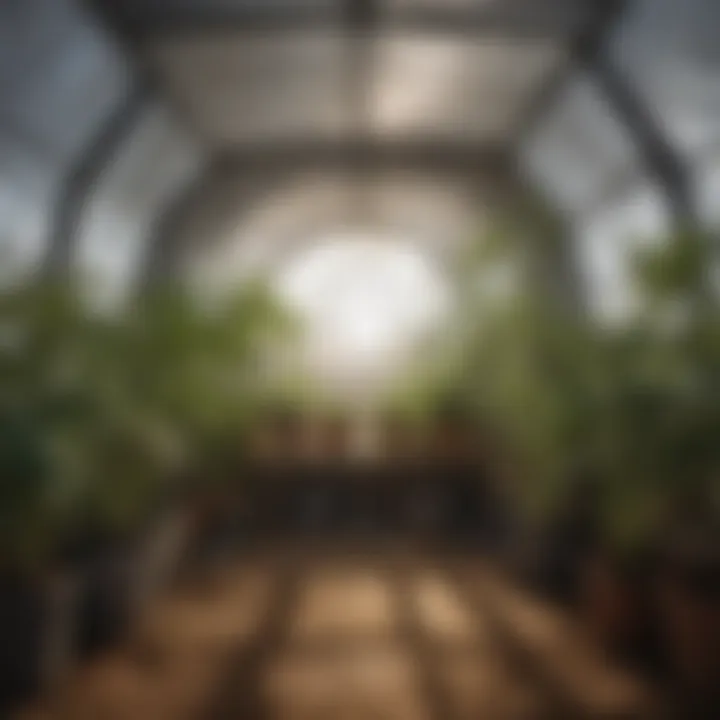
Intro
Setting up a grow tent can be a rewarding endeavor for any agricultural enthusiast. When it comes to products like the Spider Farmer grow tent, understanding the foundations of indoor gardening becomes essential. This section will outline key concepts and terminology that are relevant for both novice and seasoned growers. A clear grasp of these concepts is the first step toward creating an environment that produces thriving plants.
Key Concepts and Terminology
Basic Definitions
Before delving deeper, it’s important to clarify some basic terms related to indoor gardening and grow tent setups.
- Grow Tent: A grow tent is an enclosed space that provides the right conditions for plants to grow indoors. It typically features reflective walls, adjustable vents, and sometimes light-proofing fabric.
- Hydroponics: A method of growing plants without soil, using nutrient-rich water. This approach can be especially effective in a grow tent setting.
- Lighting Systems: Essential for plant growth, these systems simulate natural sunlight and include various types such as LED, HPS (High-Pressure Sodium), and MH (Metal Halide) lights.
- Ventilation: The process of ensuring that fresh air enters the grow tent while stale air exits. Proper ventilation is necessary to maintain optimum temperature and humidity levels.
Historical Context
The concept of indoor gardening dates back to ancient civilizations. However, modern grow tents gained popularity in the early 2000s as cannabis culture emerged and as urban gardening became a trend. Spider Farmer, a notable brand in this arena, has contributed to the advancement of indoor gardening by offering efficient, user-friendly products. The evolution of grow tents and the equipment that accompanies them reflects a growing interest in sustainable practices and urban farming.
Recent Innovations and Trends
Technological Advancements
Innovation in indoor gardening technology continues to shape how enthusiasts approach their setups. Spider Farmer has been at the forefront of developing lighting and growing systems that optimize plant growth. Here are some notable advancements:
- Full Spectrum LED Lights: These lights provide an optimal light range for plants, replicating natural sunlight.
- Automated Controls: Many grow tents now come equipped with automated systems to monitor environmental factors such as temperature and humidity.
Sustainable Practices
Sustainability is increasingly becoming a priority for growers. This includes utilizing energy-efficient lighting and water conservation techniques. Moreover, many growers are adopting organic nutrient sources, which align with sustainability goals.
Practical Applications and Techniques
Step-by-step Guides
To set up your Spider Farmer grow tent successfully, follow these key steps:
- Choose Your Location: Select a space that is away from direct sunlight and has easy access to electricity and water.
- Assemble the Tent: Follow the manufacturer's instructions for assembling the frame and fabric of the tent.
- Install Lighting: Position your chosen lighting system at an appropriate distance to prevent overheating.
- Set Up Ventilation: Ensure that fans and filters are correctly positioned to facilitate air circulation.
- Maintain Environmental Conditions: Regularly check temperature and humidity levels to create an ideal growing environment.
Case Studies
Several successful indoor gardeners have shared their experiences using Spider Farmer products. For instance, one amateur grower reported a 30% increase in yield after switching from traditional lighting to Spider Farmer's LED options. They noticed healthier plants and reduced energy costs, highlighting the advantages of modern grow tent setups.
"Investing in quality equipment like Spider Farmer has elevated my indoor gardening experience to a new level."
Prelims to Indoor Gardening
Indoor gardening represents a selective approach to horticulture that emphasizes the cultivation of plants in controlled environments, such as grow tents. This practice not only allows for year-round gardening but also offers the flexibility to create optimal conditions for growth. The guidelines in this article are particularly relevant for anyone considering a Spider Farmer grow tent as their indoor gardening solution.
Understanding the Importance of Controlled Environments
Controlled environments play a critical role in successful indoor gardening. They safeguard plants from adverse weather conditions, pests, and diseases, contributing to a healthier growing environment. Moreover, it allows growers to manipulate various factors like light, temperature, humidity, and CO2 levels.
Creating these controlled settings can lead to:
- Increased Yields: By optimizing the conditions, plants can grow faster and produce more.
- Resource Efficiency: Proper management of water and nutrients ensures that resources are not wasted.
- Reduced Risks: A controlled environment minimizes the exposure to harmful pests and diseases.
Understanding these principles is essential as they set the foundation for effective indoor gardening techniques.
Why Choose a Spider Farmer Grow Tent
Selecting the right grow tent is paramount for any indoor garden. Spider Farmer grow tents are known for their durability and efficient design. They provide an ideal space for plant cultivation, accommodating various sizes and setups depending on grower needs.
Some advantages of choosing Spider Farmer grow tents include:
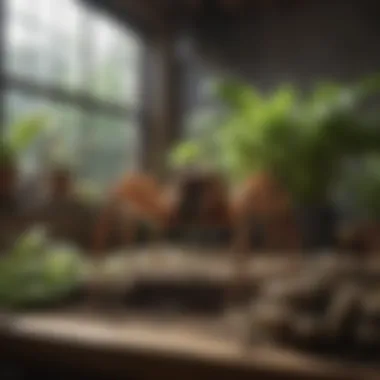
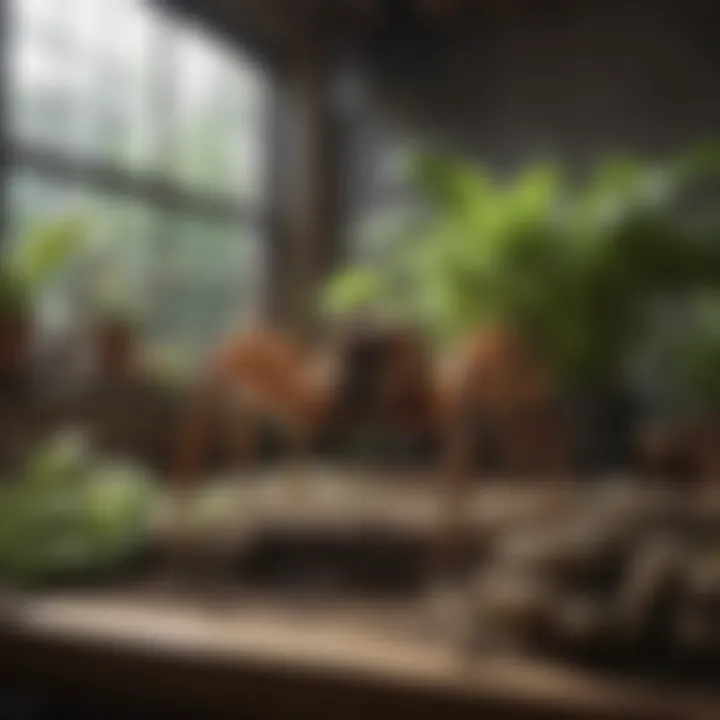
- High Reflectivity: The materials used in these tents enhance light intensity by reflecting it evenly across the plants.
- Easy Assembly: The designs are user-friendly, allowing both novice and experienced growers to set up their tents without hassle.
- Durable Construction: These tents endure the conditions required for indoor gardening, making them a long-term investment.
This combination of benefits establishes Spider Farmer as a leading option for indoor gardeners looking to enhance their cultivation practices, making them a fitting choice for anyone interested in maximizing their gardening efforts.
Components of a Spider Farmer Grow Tent
Understanding the components of a Spider Farmer grow tent is essential for anyone interested in indoor gardening. Each piece plays a critical role in creating and maintaining an optimal environment for plant growth. Focusing on the components helps ensure plants thrive and produce good yield.
Overview of the Grow Tent Structure
The grow tent structure is the physical framework that houses your plants and equipment. It offers a controlled environment where factors such as light, temperature, and humidity are regulated. Typically constructed with a sturdy frame and an outer fabric layer, the tent can vary in size. Common dimensions range from small units to spacious ones suitable for multiple plants.
A well-designed tent features reflective material on the interior walls. This reflects the light back onto the plants, maximizing the efficiency of your lighting system. Moreover, ventilation and access ports are strategically placed to facilitate airflow and maintenance tasks. The overall structure must provide stability while being easy to assemble and disassemble.
Materials Used in Construction
When selecting a Spider Farmer grow tent, the materials used in its construction are crucial. The outer fabric is often made from durable, waterproof material. This protects against potential spills and leaks. Mylar is commonly used on the inside due to its reflective properties, which aids in light distribution.
Another aspect to consider is the frame of the tent. Many tents feature metal or high-quality plastic frames that support the structure without being overly heavy. Stability is critical because some growers might hang heavy equipment or plants. Additionally, zippers and seams should be robust, as they endure regular use.
In summary, understanding the components of a Spider Farmer grow tent enables growers to create an effective growing environment. The overview of the tent structure and materials used in construction underscores the importance of quality in every aspect. Choosing the right tent will set the foundation for a successful indoor gardening experience.
Selecting the Right Location
When setting up a Spider Farmer grow tent, the significance of locating it in an appropriate space cannot be overstated. An optimal location directly affects the growth performance of your plants. Factors such as light exposure, temperature stability, and accessibility all play a crucial role in indoor gardening success. It’s essential to assess the space and consider how it will influence your setup.
Assessing Space Requirements
Before establishing your grow tent, you need to understand how much room it will occupy. Spider Farmer grow tents come in various sizes, so choose one that fits comfortably in your designated area. Ensure that there is sufficient space around the tent for equipment like fans, lights, or nutrient systems.
Consider the following points:
- Tent Size: Determine the dimensions of the tent and select a location that accommodates it.
- Height Considerations: Some plants grow tall; thus, ensure there is enough vertical space.
- Accessibility: You should have easy access to the tent for maintenance and checks.
- Surrounding Area: A clutter-free space can greatly enhance airflow and light conditions.
Considering Access to Power and Water
Accessing power and water is imperative for your grow tent's operation. Your best setup may rely on how easily you can connect necessary equipment to these utilities. Here are important factors to keep in mind:
- Electrical Outlets: Ensure there are sufficient outlets nearby to support fans, lights, and other equipment.
- Water Source: A nearby water source makes it easy to keep the plants hydrated without the need for long transport distances.
- Extension Cords and Hoses: If the outlets or water sources are not ideally positioned, plan for extension cords or hoses while ensuring they are safe and efficient.
In selecting the right location for your Spider Farmer grow tent, consider all the elements mentioned. A well-thought-out location enhances operational efficiency and promotes a healthy growing environment for your plants.
"The right location provides an excellent foundation for successful indoor gardening."
Optimal placement pays dividends in maintaining environmental controls and ensuring easy access to all necessary gear.
Essential Equipment for Setup
Setting up a grow tent effectively hinges on the choice of equipment that supports plant growth in a controlled environment. The right tools are essential to maximize productivity and create optimal conditions that facilitate healthy plant development. This section explores vital components necessary for successfully operating a Spider Farmer grow tent, focusing on types and benefits, airflow, nutrient management, and monitoring systems.
Lighting Options: Types and Benefits
Lighting is a fundamental aspect of the growing process. The choice of lights can greatly influence plant growth, photosynthesis, and overall yield. The Spider Farmer grow tent typically supports various lighting options, including LED grow lights and fluorescent lamps.
- LED Grow Lights: These lights are energy efficient and produce less heat. They can mimic natural sunlight's spectrum, making them suitable for all growth stages. LED technology allows for adjustable spectrums, which can enhance flowering and fruiting phases.
- Fluorescent Lamps: These are great for early-stage plants or seedlings due to their lower heat output and gentle light. They are easy to set up and provide adequate light for seedling development.
"Proper lighting is the backbone of successful indoor gardening. Choose wisely, and your plants will thrive."
When selecting lighting, consider the power consumption, heat output, and the specific light spectrum needed for the types of plants being grown.
Ventilation and Airflow Systems
Proper ventilation is crucial for maintaining a balanced grow environment. Fresh air exchange, temperature control, and humidity management are all dependent on an effective airflow system. A combination of exhaust fans and intake vents works well to create a dynamic and well-ventilated space.
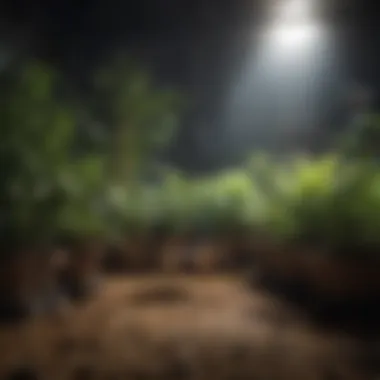

- Exhaust Fans: These remove warm air and provide a constant supply of fresh air. A fan that runs quietly while providing sufficient airflow is ideal.
- Intake Vents: These allow cool air to enter the tent. Positioning them correctly will enable a smoother air exchange process, facilitating temperature regulation.
When setting up ventilation, pay attention to the size of the fans compared to the tent volume. This ensures a continuous flow of air circulation.
Nutrient Management Tools
For plants to grow optimally, they need certain nutrients that may not be naturally available in soil. Nutrient management tools help ensure that plants receive the appropriate amounts of essential nutrients. This includes fertilizers, pH monitoring kits, and feeding schedules.
- Fertilizers: Choose specific formulations designed for different growth stages. Liquid or granular nutrients can be used effectively.
- pH Monitoring Kits: These are crucial for maintaining the correct nutrient absorption levels. A pH that is too high or too low can hinder plant growth.
Creating a feeding schedule based on the specific needs of the plants can lead to better growth and productivity.
Monitoring Systems: Temperature and Humidity
Monitoring environmental factors helps maintain optimal growing conditions. Temperature and humidity play a critical role in how plants absorb water and nutrients.
- Thermometers and Hygrometers: These devices measure temperature and humidity levels. Using these tools helps track the changes in your grow tent environment accurately.
- Smart Monitoring Systems: Advanced systems allow for real-time monitoring and control. These typically sync with mobile apps, making it easy to adjust conditions remotely.
Maintaining the right temperature -- typically between 70°F and 85°F -- paired with humidity levels around 40% to 70%, can drastically improve plant health and growth outcomes.
End
The essential equipment in a Spider Farmer grow tent plays a vital role in ensuring a suitable and productive indoor garden. From effective lighting and airflow management to nutrient tools and monitoring systems, each component must be thoughtfully selected and utilized. Adhering to these principles will create a growing environment primed for success.
Step-by-Step Setup Process
Setting up your Spider Farmer grow tent entails a systematic approach. This ensures efficiency in creating an environment conducive to plant growth. Understanding the setup process helps in optimizing the use of resources and enhancing overall yield. Detailed steps provide clarity and minimize mistakes during assembly and installation, making it essential for both novices and seasoned growers.
Assembling the Grow Tent
Assembling the Spider Farmer grow tent is the foundational step of your setup. Begin by laying out all the components. Ensure you have the frame, fabric cover, and zippers accessible.
- Start with the poles, confirming you have all the pieces.
- Assemble the frame according to the instructions provided. Connect the vertical poles to the base firmly. Be cautious not to apply excessive force, as this might compromise structural integrity.
- Once the frame stands upright, drape the fabric cover over it. Ensure the fabric aligns with openings for ventilation and access.
- Secure the cover in place with zippers or Velcro based on your model. Check for tightness but allow for some flexibility to avoid tearing.
A well-assembled tent provides a strong base for all other equipment and systems.
Installing Lighting Fixtures
Proper lighting is crucial for plant growth in an indoor garden. After your tent is assembled, installing lighting fixtures should be next on your list.
Choose the right lighting system based on your plants’ needs. Common options include LED grow lights or HPS lights. The installation process involves a few key steps:
- Position the fixture at the recommended height for your plants. Initially, this may be higher to avoid light burn.
- Secure the fixture by following specific mounting instructions. Ensure it is stable.
- Connect the fixture to a power source, using timers to regulate the light cycle. Typically, plants require about 12 to 18 hours of light a day, depending on their growth stage.
Maintaining the correct light intensity and duration directly influences plant health.
Setting Up Ventilation Systems
Ventilation is critical in managing temperature and humidity within the grow tent. A reliable system prevents overheating and ensures air circulation. Set up your fans and filters carefully:
- Install a carbon filter at the exhaust point to eliminate odors.
- Connect this to a ducting system if needed, leading outside the tent.
- Hang or place an exhaust fan to draw hot air out and bring fresh air in through passive intakes.
- Position oscillating fans inside to promote even air distribution.
Efficient ventilation mitigates diseases and promotes healthier plants.
Configuring Nutrient Delivery Systems
A proper nutrient system is essential for plant growth. Depending on your cultivation style, this might include hydroponics or soil feeding. Configuring your nutrient delivery system involves several steps:
- Choose your medium: Decide if you will use soil or a hydroponic system. Each has its own requirements.
- Install any water reservoirs: For hydroponics, ensure that your system is leak-proof and accessible.
- Set up a feeding schedule: Use measuring tools to avoid over-fertilizing. Regularly monitor pH levels and adjust nutrients accordingly.
Configuring this system accurately supports optimal growth.
A well-structured setup process not only saves time but also improves the likelihood of successful crop production. Following these methods ensures a functional environment tailored for your plants.
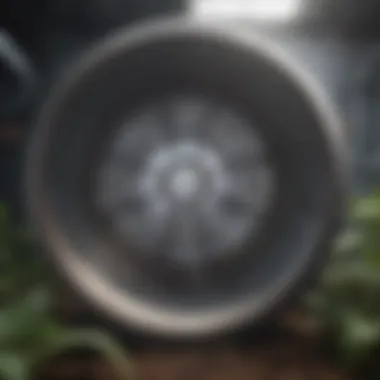
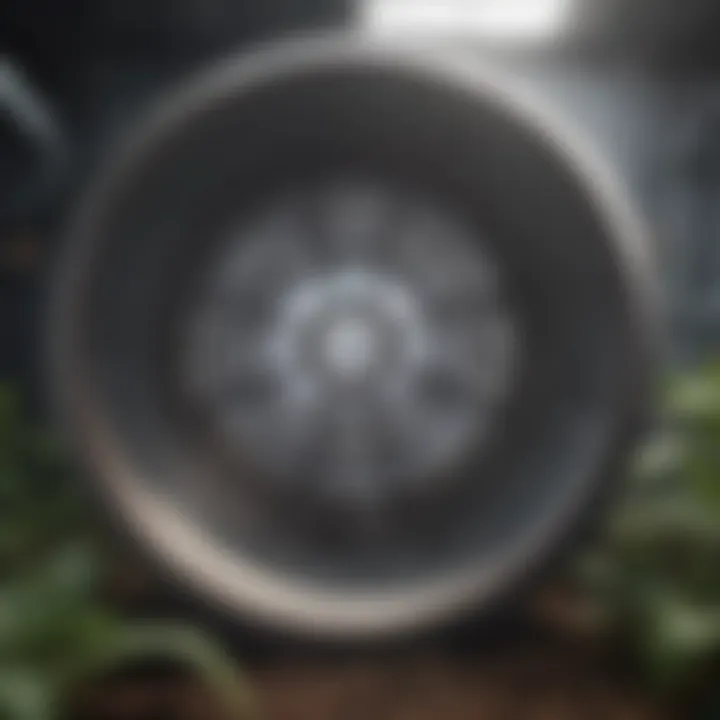
Understanding the Environment
Creating the right environment is essential for successful indoor gardening. When setting up a Spider Farmer grow tent, understanding temperature and humidity plays a vital role. It influences plant growth, yield, and health.
Temperature management promotes optimal growth conditions. Each plant species has ideal temperature ranges for different growth stages. Understanding these ranges helps in adjusting heating or cooling systems within the tent.
Humidity control is equally important. Plants transpire, releasing moisture into the air. High humidity levels might promote mold and mildew, while low humidity can cause stress to the plants. Both conditions can inhibit growth and yield. Thus, recognizing how to control humidity contributes to a thriving indoor garden.
In this section, we will examine the optimal temperature range for growth and the importance of humidity control.
Optimal Temperature Range for Growth
The ideal temperature for plant growth often falls between 65°F to 80°F (18°C to 27°C). However, different plants have specific needs.
- Seedling Stage: Likely benefits from the higher end of the range, around 75°F to 80°F (24°C to 27°C). This promotes germination.
- Vegetative Stage: During this phase, maintaining a temperature around 70°F to 78°F (21°C to 25°C) is preferable for healthy growth.
- Flowering Stage: Ideal temperatures lower slightly, around 65°F to 75°F (18°C to 24°C) to encourage blooming.
Using a thermometer can help monitor the tent's internal temperature accurately. For individuals managing more sensitive plants, using a digital thermometer with a built-in hygrometer is beneficial. This provides constant readings.
In addition, heating mats or fans may be added. These devices can manage temperature fluctuations effectively. Adjustments might be necessary based on seasonal changes, so constant monitoring is key.
Tip: Try to maintain consistency in temperature. Sudden fluctuations can lead to plant shock.
Importance of Humidity Control
Humidity levels in a grow tent typically range from 40% to 70%. Maintaining proper humidity ensures that plants can absorb water effectively and supports their transpiration process.
- Low Humidity (Below 40%): Leads to water stress. This can hinder growth and cause issues like wilting. Plants may also experience nutrient deficiencies as uptake becomes erratic.
- High Humidity (Above 70%): Encourages the growth of mold and mildew. This phenomenon can damage plants and reduce yields.
Humidifiers can be used to raise humidity levels. Conversely, dehumidifiers and fans help lower it. Most indoor gardeners place these tools in a way that maximizes air circulation to avoid localized high-humidity spots.
Regularly checking humidity levels also helps in identifying problems early. This proactive approach ensures that plants thrive in a controlled environment suited to their growth needs.
Common Challenges and Solutions
Setting up an indoor garden is a rewarding endeavor, but it comes with its own set of challenges. Understanding these difficulties is crucial for both novice and seasoned growers using a Spider Farmer grow tent. This section delves into common obstacles and presents effective solutions, enhancing the chances of a fruitful harvest.
Dealing with Pests and Diseases
Pests and diseases present a significant threat to any indoor garden, including those established in a Spider Farmer grow tent. The confined space can create a perfect breeding ground for pests. Common offenders include aphids, spider mites, and whiteflies. Recognizing early signs of infestation can make all the difference. For example, evident yellowing of leaves or sticky residue on surfaces often signals a problem.
To combat pests, growers should consider the integration of biological controls, such as ladybugs or predatory mites, which can effectively reduce harmful insect populations without chemicals. Additionally, maintaining a clean environment by regularly cleaning surfaces and removing dead plant material can help minimize pest introduction.
Chemical interventions exist but should be used cautiously as they can affect not only the pests but also beneficial insects and the overall health of plants. Organic insecticides, like neem oil, can be effective while remaining gentle on the ecosystem inside the tent.
Important: Monitoring plant health regularly is essential to ensure that diseases do not escalate. This necessitates investing time in observation and a commitment to preventative practices.
Managing Nutrient Deficiencies
Nutrient deficiencies are another common challenge faced by indoor gardeners. Unlike outdoor environments, grow tents need careful monitoring of nutrient levels. Deficiencies may manifest in various ways, such as discoloration or stunted growth. For instance, nitrogen deficiency typically results in yellowing leaves, while phosphorous deficiency may cause dark, dull green leaves or purple tinges.
Solving nutrient deficiencies requires a systematic approach. First, conducting soil tests can help determine which nutrients are lacking. Many growers choose to use organic fertilizers, such as worm castings or fish emulsion, which can provide essential nutrients without the risk of chemical burn.
Another effective strategy is to use nutrient-rich growth mediums. Products like coco coir or specialized soilless mixes are designed to support healthy plant growth. Additionally, scheduling regular fertilization, aligned with the growth cycle of the plants, can ensure that nutrient levels remain optimal.
In summary, addressing common challenges like pest control and nutrient deficiencies is vital for successful indoor gardening with a Spider Farmer grow tent. Continuous monitoring and employing preventive measures ensure a rotating cycle of healthy growth, minimizing setbacks and promoting optimum yield.
End
Setting up a grow tent, particularly a Spider Farmer grow tent, represents a pivotal advancement in indoor gardening. Such setups not only provide an optimized environment but also shield plants from external variables. Recognizing the significance of a well-planned grow tent allows you to harness the full potential of your growing space, ensuring high yields and plant health.
Recap of Key Points
To summarize the core elements of establishing a Spider Farmer grow tent:
- Controlled Environment: Creating a controlled environment is crucial for plant health. Temperature, humidity, and lighting play significant roles.
- Equipment Necessity: Utilize specific equipments like LED lights, ventilation systems, and nutrient delivery tools. Each component contributes to an effective growing system.
- Combatting Challenges: Learn common issues such as pests and nutrient deficiencies, and prepare solutions in advance. This proactivity enhances your gardening success.
- Ongoing Monitoring: Implement monitoring systems for temperature and humidity, ensuring adjustments can be made as needed.
Encouragement for Continued Learning
Indoor gardening is a continuous journey of experimentation and discovery. Challenge yourself to explore more about plant science, advanced growing techniques, and the latest technologies. Engage with communities on platforms like Reddit or Facebook to share experiences and gather knowledge from other growers. Remember, learning is key to evolving your gardening practices and achieving greater success. Stay curious and invest time in understanding the finer aspects of your grow tent setup. Progress in gardening mirrors the meticulous care you give your plants.















